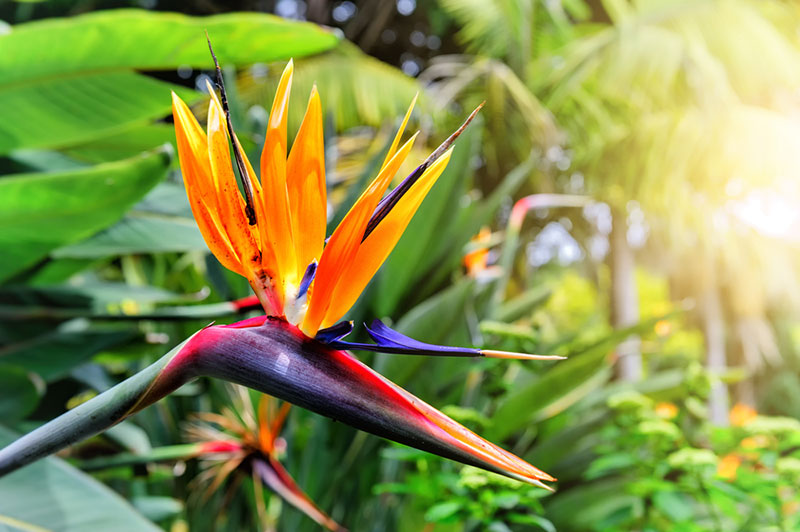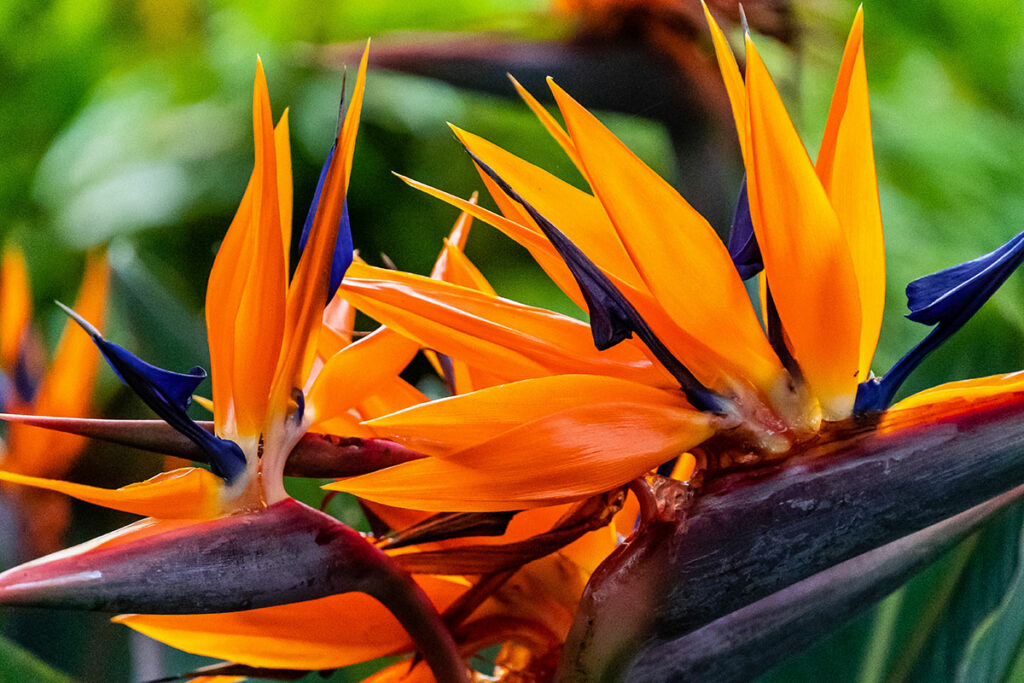A bird of paradise is a spectacular flowering plant that is full of tropical colors.
It’s a perennial that comes from South Africa and is prized all over the world for its unusual shape and impressive colors. It will grow all year long outdoors in zones 10 through 12.
They also can be grown in containers and brought inside during the coldest months.

They will grow to be as tall as 4′ to 6′ and just as wide. The unique flowers bloom in the late winter and into the early spring for an early flower that looks spectacular anywhere you put it. Each year, a healthy bird of paradise can bloom with up to three dozen of its showy flowers.
Light
The bird of paradise grows its best in full sunlight. However, in some very hot regions, having partial shade in the afternoon can keep it from being adversely affected by the heat and strong sun. This bit of shade can keep young plants from getting burnt leaves. When this plant gets full sun, it grows to a shorter height and has smaller blooms. When it’s in partial shade, it will grow to be taller and have larger blossoms.
Water
It can take a few months for bird of paradise to become established, and it will need to be watered regularly during this time. For its initial six months, it should be watered so that the soil is balanced and neither too dry not too wet. Touch the soil every few days and water it once it becomes dry. After that first six months, it can be watered regularly during the growing season and watered less often in the winter. If it gets watered too little, the outer leaves can turn yellow. If watered too much, the leaves can turn crunchy and brown.
Temperature
As a warm-weather plant, it will do its best when the temperature is at least 50 degrees. The temperature should be steadily at between 50 and 72 degrees to thrive. If it’s planted in a container, it should be brought inside anytime the temperature goes below 50.

Soil
The bird of paradise loves rich, fertile and loamy soils, and it needs them to drain well. They like the soil to be slightly acidic and to be slightly moist. If you’re planting it in a container, a normal potting soil can be used. If you’re planting it outdoors, adding a little organic matter such as compost to the soil before you plant it can help it to grow and thrive.
Fertilizer
This plant grows quickly, and it needs a lot of nutrients to do so. It can use a granular fertilizer everything three months during the warmer months but needs none in the winter. Before adding the fertilizer, water the soil, then water it again after adding the fertilizer. Some growers choose instead to use a slow-release fertilizer once during the spring. When you apply fertilizer, make sure that it doesn’t touch the leaves or stems of the plant.
Is Bird of Paradise Toxic?
The bird of paradise does have some toxicity, but it is generally considered safe for humans. If a child were to eat a small piece of it, it could cause nausea or other effects on the gastrointestinal system. If a large amount is eaten, there could be dangerous effects and a doctor should be consulted. Its main toxicity is with animals. If you have bird of paradise around pets, it’s important to make sure that they don’t ingest it. This includes horses as well as dogs and cats.
Deadheading and Pruning
It’s ok to trim and clean up a bird of paradise during any time of the year, but if you will do some serious pruning, it should be done in the early spring. Pruning is done to thin out the leaves, to get rid of plant matter that has faded and to remove any stems that are damaged.
If stems are damaged, they can be more susceptible to plant diseases, and they should be removed completely. To do this correctly, remove the stem cleanly at the point where it is connected to the main body.
The flowers of this magnificent plant stay on for up to three weeks before they fade and their petals begin to drop. This is a good time to deadhead the flowers.
Deadheading isn’t required, but it will clean up the look of the plant and the remaining flowers.






